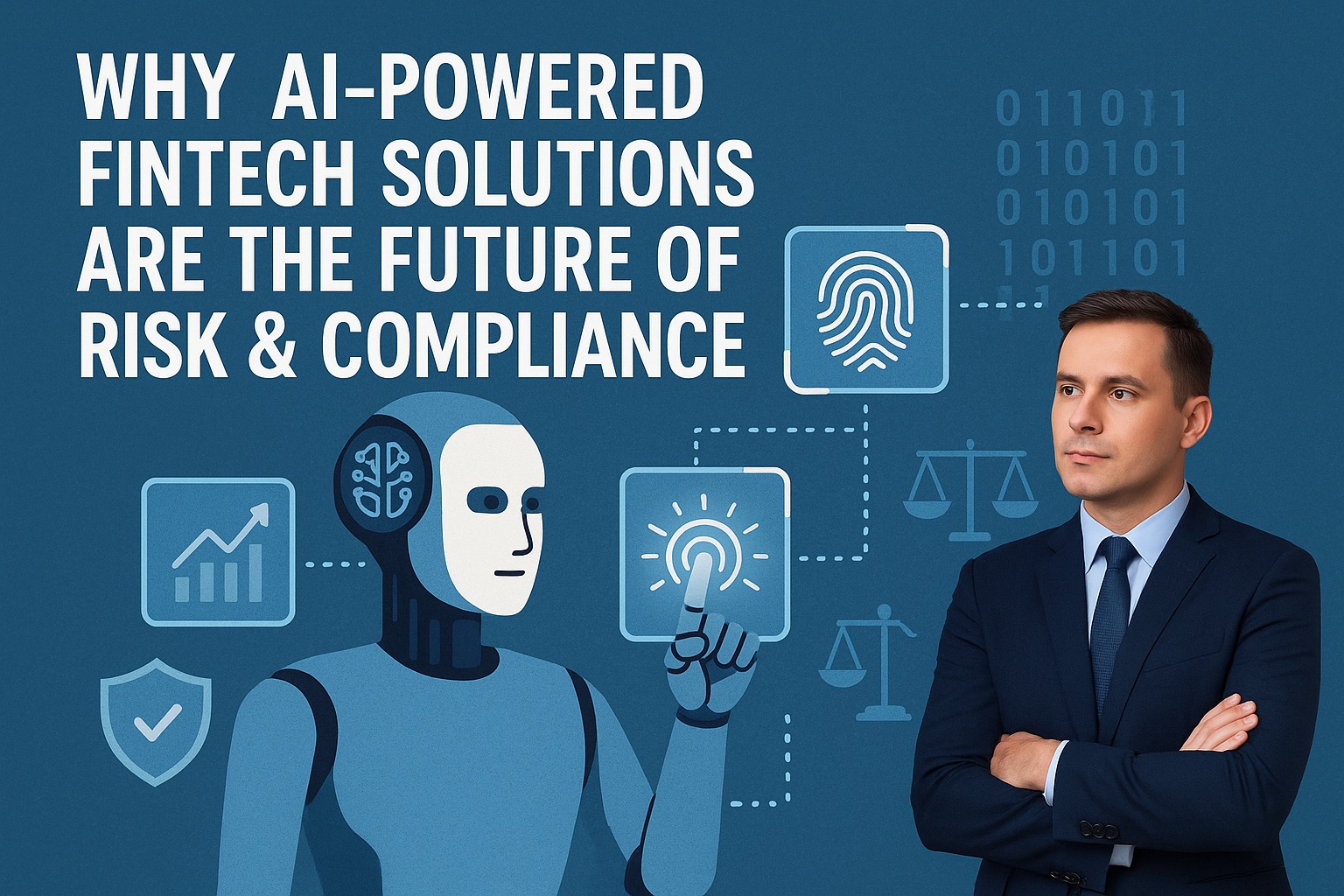In an era where financial services are increasingly digital, fast-paced, and global, managing risk and ensuring regulatory compliance have become more complex than ever. Traditional methods — based on static rules, siloed systems, and manual checks — can no longer keep pace with the rising volume of transactions, sophisticated fraud techniques, and constantly evolving regulations.
This is where AI-powered fintech solutions are making a game-changing impact. By leveraging artificial intelligence, machine learning, and predictive analytics, fintech companies and financial institutions can streamline risk management and build adaptive compliance systems that are faster, smarter, and more secure.
The Problem with Traditional Compliance Systems
Legacy compliance systems were built for a slower financial world — one with fewer data points, simpler regulations, and predictable transaction patterns. Today’s digital economy, however, presents new challenges:
- Data Overload: Financial institutions process thousands of data points per second. Manual reviews are no longer feasible.
- High Costs: According to Thomson Reuters, large banks spend over $1 billion annually on compliance-related activities.
- Slow Detection: Traditional systems struggle to identify fraud in real-time or predict emerging risks.
- Regulatory Fragmentation: Firms operating globally must align with dozens of frameworks (e.g., PCI DSS, GDPR, SOC 2, AMLD5).
What Are AI-Powered Fintech Solutions?
AI in fintech goes beyond automation. It includes:
- Machine Learning (ML): Learns from historical data to detect patterns and flag anomalies.
- Natural Language Processing (NLP): Extracts insights from regulatory documents or unstructured communications.
- Predictive Analytics: Anticipates fraud, credit defaults, or regulatory breaches before they occur.
AI can be embedded across fintech platforms — from digital banking apps and lending portals to payment gateways and core banking systems — to enhance both risk control and operational efficiency.
Applications of AI in Risk & Compliance
- Fraud Detection
AI models can instantly scan millions of transactions to detect fraud patterns that evolve in real time — something rule-based systems can’t do. - AML Monitoring
Tools powered by AI dynamically assess money-laundering risks using behavioural profiles, instead of rigid checklists. - KYC Automation
AI-driven tools use biometric verification, facial recognition, and ID parsing to speed up onboarding and reduce human error. - Real-Time Compliance Dashboards
Firms can visualise compliance risks in real-time with AI summarising key risk metrics and auto-generating reports. - AI in Credit Risk
ML models can evaluate non-traditional data (like mobile usage or social data) to assess creditworthiness — a lifeline for the underbanked.
Benefits of AI-Driven Compliance Systems
AI offers quantifiable advantages:
- Speed: Real-time monitoring reduces response time to fraud or breaches.
- Accuracy: ML models reduce false positives, which currently account for over 90% of fraud alerts in some systems.
- Scalability: Cloud-based AI systems can handle increased volumes without adding headcount.
- Cost Savings: According to McKinsey, AI can reduce compliance costs by 30–50% over time.
- Global Readiness: AI helps adapt to changing regulations across geographies with minimal rework.
Industry Use Cases
- Lending Startups: Use AI for credit scoring and identity verification, allowing them to underwrite loans to new demographics.
- Digital Banks: Embed AI to monitor transactions for fraud in real-time and auto-adjust risk models.
- Enterprise SaaS: Leverage AI to manage compliance across integrations with Salesforce, Azure, and blockchain networks.
Building AI-Powered Compliance: Best Practices
To implement AI in fintech effectively, firms need:
- Microservices Architecture: For flexible deployment and integration with APIs like Plaid or Oracle Open Banking.
- Secure DevOps Pipelines: To ensure no AI system becomes a vector for attack.
- Data Governance: To avoid model bias and ensure ethical use of customer data.
- Partners like Datalabs Solutions: Who can architect, build, and scale secure AI systems tailored to financial needs.
The Future of AI in Financial Compliance
As regulations grow more dynamic and fraudsters become more sophisticated, the future will demand predictive compliance — systems that proactively detect violations before they happen. AI co-pilots will assist compliance teams, while RegTech solutions powered by AI will become the norm, not the exception.
AI will also power embedded compliance in consumer apps, crypto platforms, and digital wallets — ensuring that as financial experiences get smoother, the guardrails remain strong.
Final Thoughts
AI is no longer an emerging trend in fintech — it’s a necessity. Financial institutions that fail to adopt AI-driven compliance solutions risk falling behind, both in innovation and in trust. Whether you’re launching a fintech startup or modernising a legacy system, integrating AI is key to building scalable, secure, and future-ready financial products.
Need a compliance system built for the future?
Contact Datalabs Solutions to explore how AI-powered fintech solutions can transform your risk and compliance framework.

